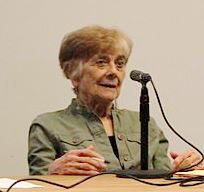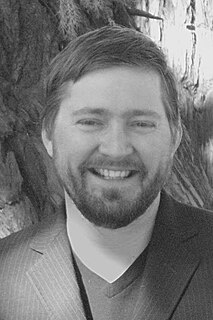
A political movement is a collective attempt by a group of people to change government policy or social values. Political movements are usually in opposition to an element of the status quo and are often associated with a certain ideology. Some theories of political movements are the political opportunity theory which states that political movements stem from mere circumstances and the resource mobilization theory which states that political movements result from strategic organization and relevant resources. Political movements are also related to political parties in the sense that they both aim to make an impact on the government and that several political parties have emerged from initial political movements. While political parties are engaged with a multitude of issues, political movements tend to focus on only one major issue.

A social movement is a loosely organized effort by a large group of people to achieve a particular goal, typically a social or political one. This may be to carry out, resist or undo a social change. It is a type of group action and may involve individuals, organizations or both. Definitions of the term are slightly varied. Social movements have been described as "organizational structures and strategies that may empower oppressed populations to mount effective challenges and resist the more powerful and advantaged elites". They represent a method of social change from the bottom within nations.
Contentious politics is the use of disruptive techniques to make a political point, or to change government policy. Examples of such techniques are actions that disturb the normal activities of society such as demonstrations, general strike action, riot, terrorism, civil disobedience, and even revolution or insurrection. Social movements often engage in contentious politics. The concept distinguishes these forms of contention from the everyday acts of resistance explored by James C. Scott, interstate warfare, and forms of contention employed entirely within institutional settings, such as elections or sports. Historical sociologist Charles Tilly defines contentious politics as "interactions in which actors make claims bearing on someone else's interest, in which governments appear either as targets, initiators of claims, or third parties."

Social movement theory is an interdisciplinary study within the social sciences that generally seeks to explain why social mobilization occurs, the forms under which it manifests, as well as potential social, cultural, and political consequences, such as the creation and functioning of social movements.

Resource mobilization is the process of getting resources from the resource provider, using different mechanisms, to implement an organization's predetermined goals. It is a theory that is used in the study of social movements and argues that the success of social movements depends on resources and the ability to use them.

Richard Andrew Cloward was an American sociologist and an activist. He influenced the Strain theory of criminal behavior and the concept of anomie, and was a primary motivator for the passage of the National Voter Registration Act of 1993 known as "Motor Voter". He taught at Columbia University for 47 years.

Frances Fox Piven is an American professor of political science and sociology at The Graduate Center, City University of New York, where she has taught since 1982.
William Anthony Gamson was a professor of Sociology at Boston College, where he was also the co-director of the Media Research and Action Project (MRAP). He is the author of numerous books and articles on political discourse, the mass-media and social movements from as early as the 1960s. His influential works include Power and Discontent (1968), The Strategy of Social Protest (1975), Encounters with Unjust Authority (1982) and Talking Politics (2002), as well as numerous editions of SIMSOC.

Doug McAdam is Professor of Sociology at Stanford University. He is the author or co-author of over a dozen books and over fifty articles, and is widely credited as one of the pioneers of the political process model in social movement analysis. He wrote one of the first books on the theory in 1982 when analyzing the U.S. Civil Rights Movement: Political Process and the Development of the Black Insurgency 1930-1970. His other book Freedom Summer won the C. Wright Mills Award in 1990. He served as the director of the prestigious Center for Advanced Study in the Behavioral Sciences between 2001 and 2005. He was elected to the American Academy of Arts and Sciences in 2003.
Political opportunity theory, also known as the political process theory or political opportunity structure, is an approach of social movements that is heavily influenced by political sociology. It argues that success or failure of social movements is affected primarily by political opportunities. Social theorists Peter Eisinger, Sidney Tarrow, David S. Meyer and Doug McAdam are considered among the most prominent supporters of the theory.
James Macdonald Jasper is a writer and sociologist who has taught Ph.D. students at the Graduate Center of the City University of New York since 2007. He is best known for his research and theories about culture and politics, especially the cultural and emotional dimensions of protest movements.
In sociology, moral shock is a cognitive and emotional process that encourages participation. James M. Jasper, who originally coined the term, used it to help explain why people might join a social movement in the absence of pre-existing social ties with members. It denotes a kind of visceral unease, triggered by personal or public events, that captures people’s attention. Moral shocks often force people to articulate their moral intuitions. It is an appealing concept because it brings together emotional, moral, and cognitive dynamics. According to David A. Snow and Sarah A. Soule, authors of “A Primer on Social Movements”, the moral shock argument says that some events may be so emotionally moving or morally reprehensible that individuals will feel that they must join the cause regardless of their connection or ties to members of that organization. Moral shock is similar in many ways to shock advertising which uses analogous techniques to help increase brand success and awareness. Moral shocks have been shown to help recruit people to the animal rights movement, the movement for peace in Central America, anti-abortion campaigns and anti-racist movements.
David A. Snow is a Distinguished Professor of Sociology at the University of California, Irvine.

Repertoire of contention refers, in social movement theory, to the set of various protest-related tools and actions available to a movement or related organization in a given time frame.
John David McCarthy is an American sociologist. He earned his Ph.D degree in Sociology at University of Oregon in 1968. He is currently a Professor of Sociology at Pennsylvania State University.

Drew Halfmann is an American sociologist best known for his research on social policy in the United States.
Edwin Amenta is an American sociologist best known for his study of social policy, social movements, and the New Deal.
The radical flank effect refers to the positive or negative effects that radical activists for a cause have on more moderate activists for the same cause.
Ruud Koopmans is a Dutch sociologist and professor at the Humboldt University of Berlin. His research focuses on migration, social integration and transnationalization.
Poor People's Movements: Why They Succeed, How They Fail is a book about social movements by the American academics and political activists Frances Fox Piven and Richard Cloward. The book advanced Piven and Cloward's theories about the possibilities and limits of social change through protest. The book uses four case studies: the Unemployed Workers' Movement of the Great Depression, the Industrial Workers' Movement, the Civil Rights Movement, and the Welfare Rights Movement, particularly the activity of the National Welfare Rights Organization.









